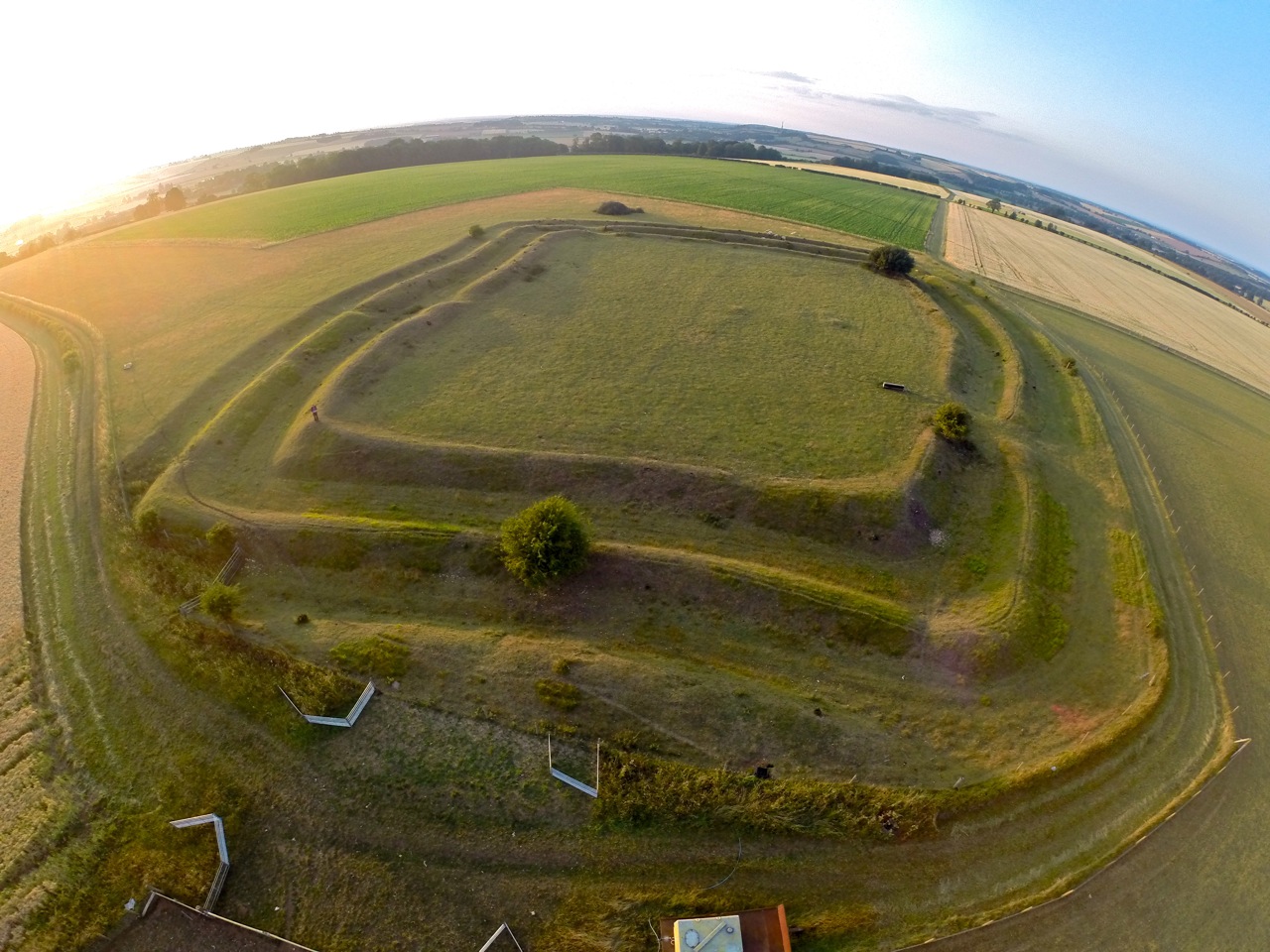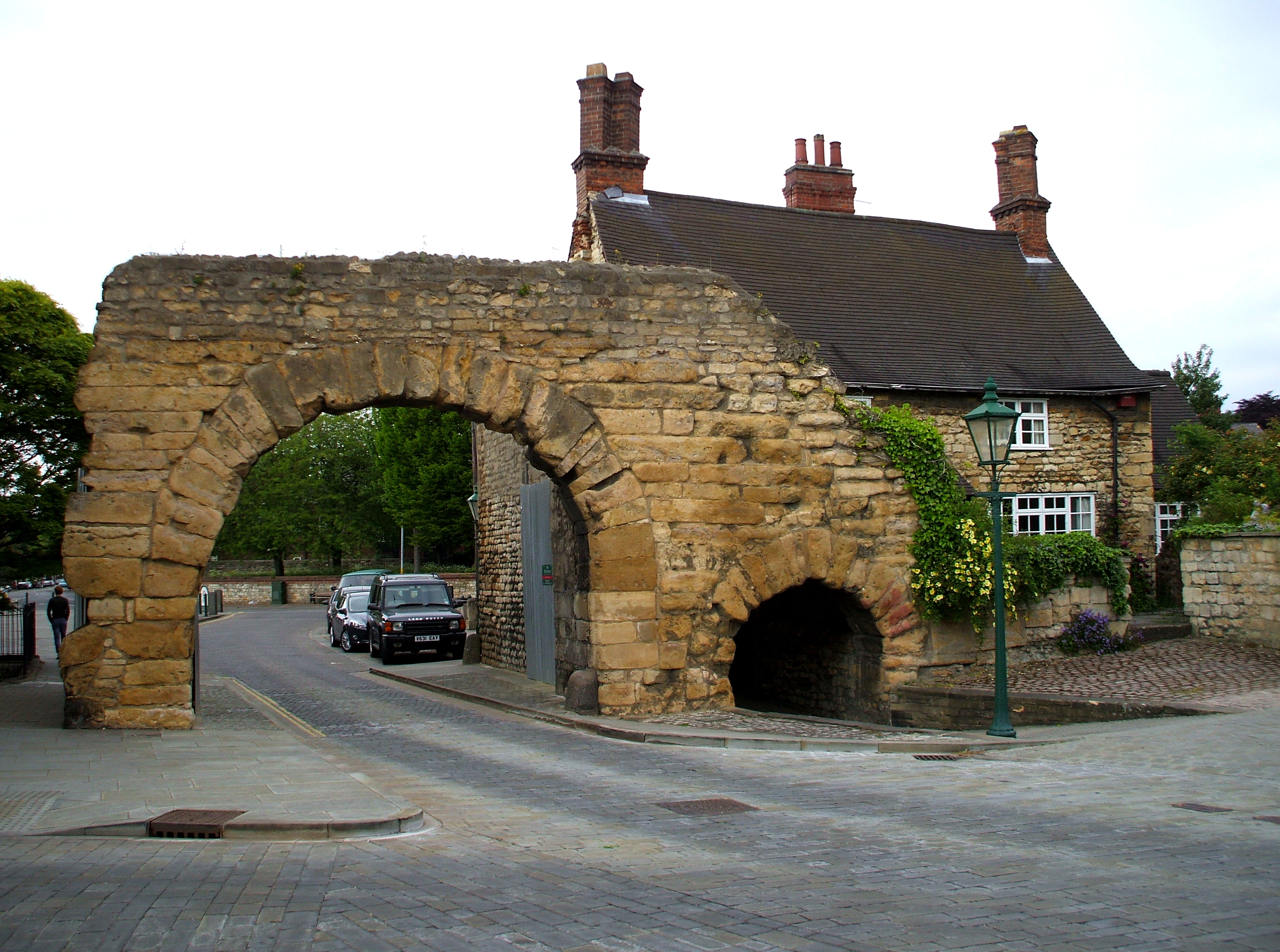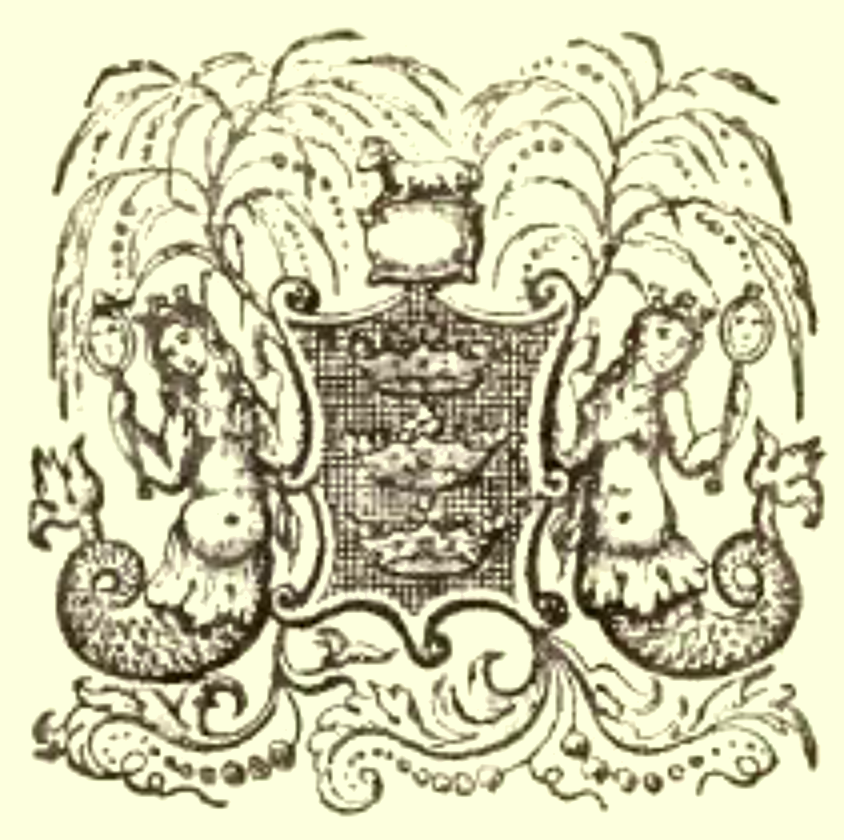|
Honington, Lincolnshire
Honington is an English village and Civil parishes in England, civil parish in the South Kesteven Non-metropolitan district, district of Lincolnshire. It lies just north of the junction between the A153 road, A153 and A607 road, A607 roads, about north of Grantham and west of Sleaford. History To the east of Honington are Earthwork (archaeology), earthwork remains of an Iron Age fort, measuring with defensive banks and ditches. There a hoard of Roman coins was found in 1691, although an investigation in 1976 could find no evidence of Roman occupation.Nikolaus Pevsner, Pevsner, Nikolaus; John Harris (curator), Harris, John; ''The Buildings of England: Lincolnshire'' pp. 576 and 577, Penguin, (1964); revised by Nicholas Antram (1989), Yale University Press. The 1885 ''Kelly's Directory'' view of the earthworks "on the heath near the village" is that it is the site of a Castra, Roman Camp with Ditch (fortification), fosse and vallum.''Kelly's Directory of Lincolnshire with the ... [...More Info...] [...Related Items...] OR: [Wikipedia] [Google] [Baidu] |
2001 United Kingdom Census
A nationwide census, known as Census 2001, was conducted in the United Kingdom on Sunday, 29 April 2001. This was the 20th Census in the United Kingdom, UK census and recorded a resident population of 58,789,194. The 2001 UK census was organised by the Office for National Statistics (ONS) in England and Wales, the General Register Office for Scotland (GROS) and the Northern Ireland Statistics and Research Agency (NISRA). Detailed results by region, council area, ward and ONS coding system, output area are available from their respective websites. Organisation Similar to previous UK censuses, the 2001 census was organised by the three statistical agencies, ONS, GROS, and NISRA, and coordinated at the national level by the Office for National Statistics. The Order in Council#Orders in Council as Statutory Instruments, Orders in Council to conduct the census, specifying the people and information to be included in the census, were made under the authority of the Census Act 1920 in ... [...More Info...] [...Related Items...] OR: [Wikipedia] [Google] [Baidu] |
Ditch (fortification)
In military engineering, a ditch is an obstacle designed to slow down or break up an attacking force, while a Trench warfare, trench is intended to provide cover to the defenders. In military fortifications, the side of a ditch furthest from the enemy and closest to the next line of defence is known as the scarp (fortification), scarp while the side of a ditch closest to the enemy is known as the counterscarp. Uses In early fortifications, ditches were often used in combination with rampart (fortification), ramparts to slow down the enemy whilst defensive fire could be brought to bear from the relative protection afforded by the rampart and possibly the palisade. In medieval fortifications, a ditch was often constructed in front of a defensive wall to hinder Mining (military), mining and escalade activities from an attacker. When filled with water, such a defensive ditch is called a moat. However, moats may also be dry. Star forts designed by military engineers like Vauban, co ... [...More Info...] [...Related Items...] OR: [Wikipedia] [Google] [Baidu] |
Norwich
Norwich () is a cathedral city and district of the county of Norfolk, England, of which it is the county town. It lies by the River Wensum, about north-east of London, north of Ipswich and east of Peterborough. The population of the Norwich City Council local authority area was estimated to be 144,000 in 2021, which was an increase from 143,135 in 2019. The wider Norwich List of urban areas in the United Kingdom, built-up area had a population of 213,166 at the 2011 census. As the seat of the Episcopal see, See of Norwich, the city has one of the country's largest medieval cathedrals. For much of the second millennium, from medieval to just before Industrial Revolution, industrial times, Norwich was one of the most prosperous and largest towns of England; at one point, it was List of towns and cities in England by historical population, second only to London. Today, it is the largest settlement in East Anglia. Heritage and status Norwich claims to be the most complete medie ... [...More Info...] [...Related Items...] OR: [Wikipedia] [Google] [Baidu] |
Lord Of The Manor
Lord of the manor is a title that, in Anglo-Saxon England and Norman England, referred to the landholder of a historical rural estate. The titles date to the English Feudalism, feudal (specifically English feudal barony, baronial) system. The lord enjoyed Manorialism, manorial rights (the rights to establish and occupy a residence, known as the manor house and demesne) as well as seignory, the right to grant or draw benefit from the estate (for example, as a landlord). The title is not a peerage or title of upper nobility (although the holder could also be a peer) but was a relationship to land and how it could be used and those living on the land (tenants) may be deployed, and the broad estate and its inhabitants administered. The title continues in modern England and Wales as a legally recognised form of property that can be held independently of its historical rights. It may belong entirely to one person or be a moiety title, moiety shared with other people. The title is know ... [...More Info...] [...Related Items...] OR: [Wikipedia] [Google] [Baidu] |
Lincoln, England
Lincoln () is a cathedral city and non-metropolitan district, district in Lincolnshire, England, of which it is the county town. In the 2021 Census, the city's district had a population of 103,813. The 2021 census gave the Lincoln Urban Area, urban area of Lincoln, including Bracebridge Heath, North Hykeham, South Hykeham and Waddington, Lincolnshire, Waddington, a recorded population of 127,540. Roman Britain, Roman ''Lindum Colonia'' developed from an Iron Age settlement of Celtic Britons, Britons on the River Witham, near the Fosse Way road. Over time its name was shortened to Lincoln, after successive settlements, including by Anglo-Saxons and Danes (tribe), Danes. Landmarks include Lincoln Cathedral (English Gothic architecture; for over 200 years the world's tallest building) and the 11th-century Norman architecture, Norman Lincoln Castle. The city hosts the University of Lincoln, Bishop Grosseteste University, Lincoln City F.C. and Lincoln United F.C. Lincoln is the large ... [...More Info...] [...Related Items...] OR: [Wikipedia] [Google] [Baidu] |
Great Northern Railway (Great Britain)
The Great Northern Railway (GNR) was a British railway company incorporated in 1846 with the object of building a line from London to York. It quickly saw that seizing control of territory was key to development, and it acquired, or took leases of, many local railways, whether actually built or not. In so doing, it overextended itself financially. Nevertheless, it succeeded in reaching into the coalfields of Nottinghamshire, Derbyshire and Yorkshire, as well as establishing dominance in Lincolnshire and north London. Bringing coal south to London was dominant, but general agricultural business, and short- and long-distance passenger traffic, were important activities too. Its fast passenger express trains captured the public imagination, and its Chief Mechanical Engineer Nigel Gresley became a celebrity. Anglo-Scottish travel on the East Coast Main Line became commercially important; the GNR controlled the line from London to Doncaster and allied itself with the North Easte ... [...More Info...] [...Related Items...] OR: [Wikipedia] [Google] [Baidu] |
Boston, Lincolnshire
Boston is a market town and inland port in the borough of the same name in the county of Lincolnshire, England. It lies to the south-east of Lincoln, east of Nottingham and north-east of Peterborough. The town had a population of 45,339 at the 2021 census, while the borough had an estimated population of 66,900 at the ONS mid-2015 estimates. The Haven in Boston flows about 5 miles away to the Lincolnshire coast at The Wash, a bay between Lincolnshire and Norfolk. Boston's most notable landmark is St Botolph's Church, colloquially referred to as 'The Stump', the largest parish church in England, which is visible from miles away across the flat lands of Lincolnshire. Residents of Boston are known as Bostonians. Emigrants from Boston named several other settlements around the world after the town—most notably Boston, Massachusetts, then a British colony and now part of the United States. Etymology The name ''Boston'' is said to be a contraction of " Saint Botolph's to ... [...More Info...] [...Related Items...] OR: [Wikipedia] [Google] [Baidu] |
Winnibriggs And Threo
Winnibriggs and Threo was an anciently established hundred (county subdivision), wapentake in the Parts of Kesteven, the south-east division of the English county of Lincolnshire. Most of the administrative functions of the wapentake had been lost to other local units of government by 1832.Vision of Britain siteRetrieved 16 March 2012./ref> Extent The wapentakes of Winnibriggs and Threo (or Threw) were formed in the early Middle Ages. Both are mentioned in the Domesday Book of 1086. It is unclear when they were merged. In the 1830s the combined wapentake included part of the town of Grantham, although the "Soke of Grantham" was usually designated separately. Also included were the parishes of Allington, Lincolnshire, Allington (East and West), Barrowby, Boothby Pagnell, Braceby, Colsterworth, Great Ponton, Heydour, Heydor, Honington, Lincolnshire, Honington, Great Humby, Humby, Little Humby, Little Ponton, Stoke Rochford, North Stoke, Ropsley, Sapperton, Lincolnshire, Sapperton, Sed ... [...More Info...] [...Related Items...] OR: [Wikipedia] [Google] [Baidu] |
Hundred (county Division)
A hundred is an administrative division that is geographically part of a larger region. It was formerly used in England, Wales, some parts of the United States, Denmark, Sweden, Finland, Norway, and in Cumberland County in the British Colony of New South Wales. It is still used in other places, including in Australia (in South Australia and the Northern Territory). Other terms for the hundred in English and other languages include '' wapentake'', ''herred'' (Danish and Bokmål Norwegian), ''herad'' ( Nynorsk Norwegian), ''härad'' or ''hundare'' (Swedish), ''Harde'' (German), ''hiird'' ( North Frisian), ''kihlakunta'' (Finnish), and '' cantref'' (Welsh). In Ireland, a similar subdivision of counties is referred to as a barony, and a hundred is a subdivision of a particularly large townland (most townlands are not divided into hundreds). Etymology The origin of the division of counties into hundreds is described by the ''Oxford English Dictionary'' (''OED'') as "exceedingly ... [...More Info...] [...Related Items...] OR: [Wikipedia] [Google] [Baidu] |
Gilbert De Gant
Gilbert de Gant (Giselbert de Gand, Ghent, Gaunt) (c. 1040 – 1095) was the son of Ralph, Lord of Aalst near Ghent, and Gisele of Luxembourg, the sister-in-law of Baldwin IV, Count of Flanders. Gilbert de Gant was a kinsman of Matilda of Flanders, wife of William the Conqueror. He had two older brothers, Baldwin and Ralph. Gilbert of Ghent is mentioned in the Domesday Book of 1086 as having been given titles of 172 English manors (most in Lincolnshire and Nottinghamshire) but also within 14 shires where there were estates including York, Derby, Huntingdonshire, Leicestershire and Cambridgeshire. Gilbert de Gant was a commander with William Malet when the city of York was put to the torch on 19 September 1069. Gilbert died about 1095 being buried at Bardney Abbey near Lincoln City. Marriage and issue He married Alice, Dame de Montfort-sur-Risle in about 1071 and they are known to have had the following issue: *Walter de Gant Walter de Gant (died 1139), Lord of Folki ... [...More Info...] [...Related Items...] OR: [Wikipedia] [Google] [Baidu] |
Ivo Taillebois
Ivo Taillebois (died 1094) was a powerful Norman nobleman, sheriff and tenant-in-chief in 11th-century England. Life Ivo Taillebois was a Norman most probably from Taillebois, now a small hamlet in Saint-Gervais de Briouze, Calvados.K.S.B. Keats-Rohan, ''Domesday People, A Prosopography of Persons Occurring in English Documents 1066-1166'', Vol. I (Woodbridge: The Boydell Press, 1999), p. 283 He sold land at Villers to the Abbey of Saint-Étienne, Caen and donated a church of Christot in Calvados. The latter diploma was attested by his brother Robert. Another brother, Ralph Taillebois, was High Sheriff of Bedfordshire and Ivo succeeded him as sheriff after Ralph's death shortly before 1086. In 1071 King William, with Taillebois leading his army, besieged the Isle of Ely where the rebel leader Hereward the Wake was based.''Outlaws in medieval and early modern England: crime, government and society, c.1066-c.1600'', eds. Paul Dalton; John C Appleby (Farnham, England; Burling ... [...More Info...] [...Related Items...] OR: [Wikipedia] [Google] [Baidu] |
Norman Conquest
The Norman Conquest (or the Conquest) was the 11th-century invasion and occupation of England by an army made up of thousands of Normans, Norman, French people, French, Flemish people, Flemish, and Bretons, Breton troops, all led by the Duke of Normandy, later styled William the Conqueror. William's claim to the English throne derived from his familial relationship with the childless Anglo-Saxon king Edward the Confessor, who may have encouraged William's hopes for the throne. Edward died in January 1066 and was succeeded by his brother-in-law Harold Godwinson. The Norwegian king Harald Hardrada invaded northern England in September 1066 and was victorious at the Battle of Fulford on 20 September, but Godwinson's army defeated and killed Hardrada at the Battle of Stamford Bridge on 25 September. Three days later on 28 September, William's invasion force of thousands of men and hundreds of ships landed at Pevensey in Sussex in southern England. Harold marched south to oppose ... [...More Info...] [...Related Items...] OR: [Wikipedia] [Google] [Baidu] |






